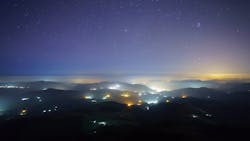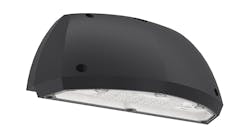In a move that could help towns, cities, and other entities tackle light pollution, the International Dark-Sky Association (IDA) is gifting devices that monitor artificial light emission from street lamps and other sources.
The new Light Monitor Grant Program includes two types of devices: one that measures general night sky brightness (and darkness), and another that takes more granular readings of characteristics such as color correlated temperature (CCT), illuminance, and flicker.
The Tucson, Ariz.–based nonprofit group is offering the monitors to some organizations that apply for its International Dark Sky Places (IDSP) certification. The IDSP Program encourages the protection of night skies through lighting policies, practices, and education. There are currently about 200 IDSP designees, divided into five categories: municipalities, urban zones, parks, reserves, and remote locations.
The IDA endeavors to protect the view of stars and other night sky features by curtailing light pollution. It also aims to mitigate other hazards of light pollution, such as deleterious effects on human health and on ecosystems.
Successful IDSP candidates receive public relations support from the IDA, and benefit from increased tourism and economic activity, the IDA says.
In determining whether to grant IDSP status, the IDA requires data collected by the monitors it is now granting, so the program aims to ease the financial burden of applying.
But not all applicants for IDSP distinction will be eligible for free light monitors.
“Recipients in novel populations in the global community joining the international effort to preserve and celebrate dark skies will have a higher priority in receiving a device in our limited stock,” the IDA said. “Priority will be given to applicants located in areas listed in the United Nations list of least developed countries. Applicants who provide a plan for using the device for multiple purposes, such as sharing the devices with other local International Dark Sky Place applicants, chapters, and delegates, will also receive higher priority.”
IDA is partnering with Gainesville, Fla.–based Asterion Foundation on the grants. Asterion is a nonprofit astronomy education and funding group. The general brightness monitors come from Ontario, Canada–based Unihedron, which is supplying its Sky Quality Monitoring-Lens (SQM-L). The detailed light meters come from Shanghai-based Opple Lighting, which is supplying its Opple Light Master III (LM-III).
Currently, IDSP applicants must provide data on CCT. In the future they might also have to furnish readings on illuminance and flicker, IDA said.
Recent IDSP designations went to Lost Trail National Wildlife Refuge in Flathead County, Mont., and to Merritt Reservoir State Recreation Area in Cherry County, Neb.
IDA is active around the world in various ways, including providing a seal of approval for outdoor luminaires that it regards as friendly to the night environment.
MARK HALPER is a contributing editor for LEDs Magazine, and an energy, technology, and business journalist ([email protected]).
*Republished on Dec. 14, 2022 for versioning issue.
For up-to-the-minute LED and SSL updates, follow us on Twitter. You’ll find curated content and commentary, as well as information on industry events, webcasts, and surveys on our LinkedIn page and our Facebook page.






